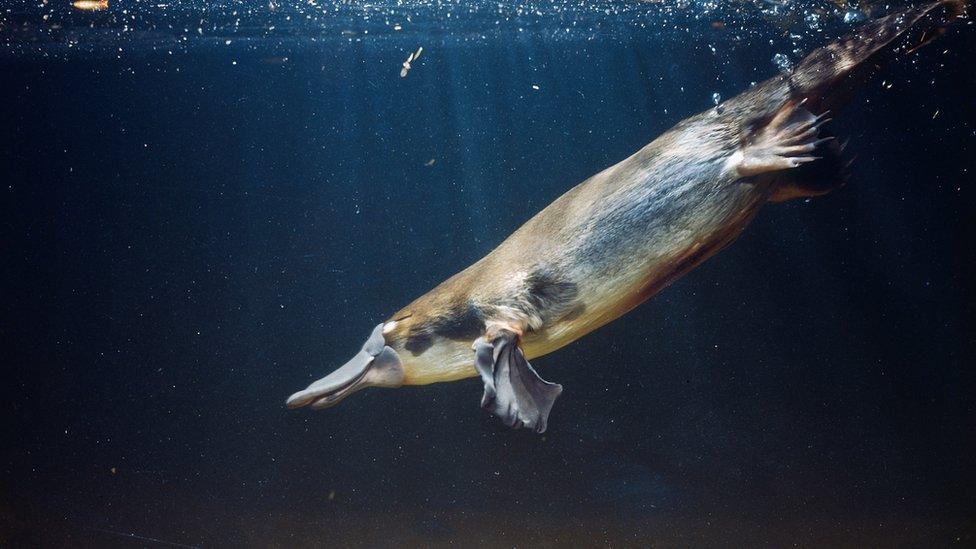Biofluorescence: Unseen world of the Celtic rainforest revealed by UV
- Published
"It gives you an insight into a hidden world of communication," says David Atthowe
An eerie glow has been emanating from Wales' forests and rockpools for the country's annual dark skies week.
David Atthowe, a nature guide from Norwich, was invited to shine his ultraviolet (UV) torches on some of the best nature spots in Pembrokeshire and Monmouthshire.
His photos of temperate rain forest in Wales reveal shapes, structures and colours that rival a coral reef.
"It is hidden from our human senses, waiting to be discovered," he said.
The 34-year-old is on a one-man mission to shine UV light on what he calls a "magic world" in which plants and animals fluoresce to communicate.
"Wales is so lucky to have so many beautiful sites [for biofluorescence] with its rockpools and temperate rainforest," he said.
Mr Atthowe visited woodlands in Wye Valley and in Pembrokeshire Coast National Park giving tours for Wales Dark Skies Week.
"The ancient woodlands are full of moss and lichen which light up under UV and lots of creatures too, like wood lice and centipedes all doing interesting things."
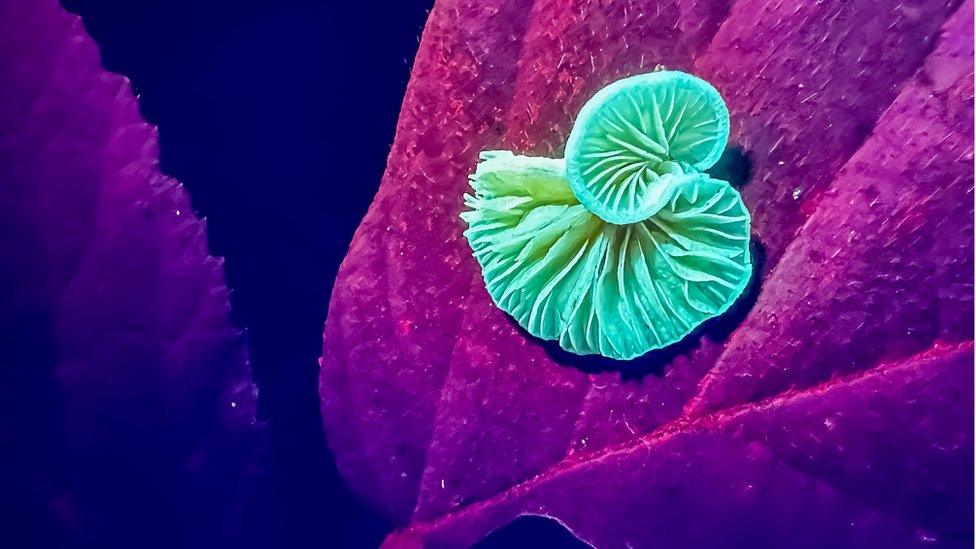
UV light reveals how some animals would see this fungi on a leaf seen in Whitestone forest near Chepstow
With more than 400 known species of lichen, he called Ty Canol Wood in Pembrokeshire one of the "most magical and special woodlands in the UK".
"My day begins at night due to of our lack of ability to see UV," he said.
"Once it's dark, it is just the most colourful and vibrant habitat," he said. "Mosses can go every single colour depending on where they're growing.
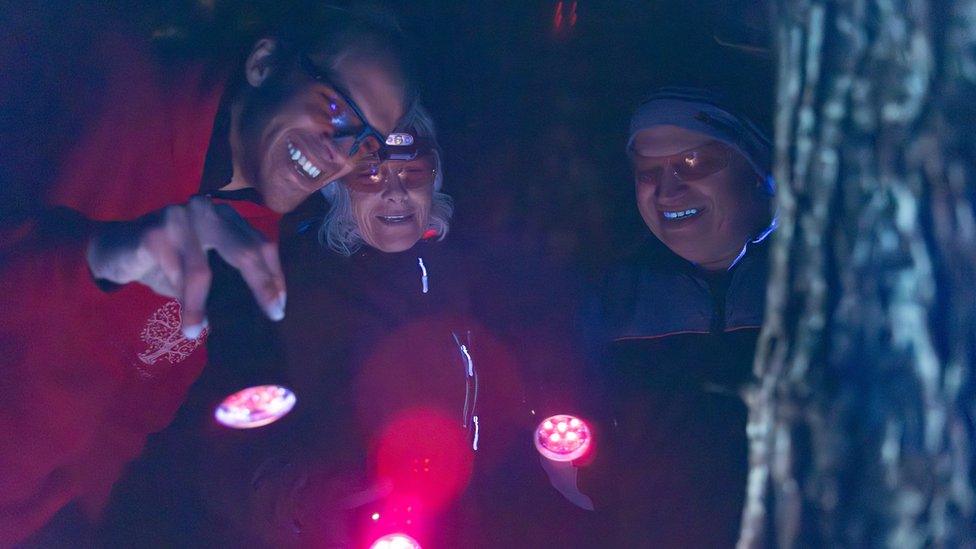
David Atthowe takes people on biofluorescence walks
"The lichens, the algae, they all go different colours," he said. "The beauty of it rivals a coral reef, it's just so vibrant."
Ruth Waycott from the Wye Valley National Landscape helped organise one of the biofluorescence walks, at Whitestone, a Natural Resources Wales-owned forest near Chepstow in Monmouthshire.
"It was so fascinating, I was immediately hooked," she said.
"Biofluorescence is another level of communication humans cannot see.
"But if we shine a UV light suddenly we see a horrendous green or yellow of a plant saying, 'you don't want to eat me, I'm poisonous'."
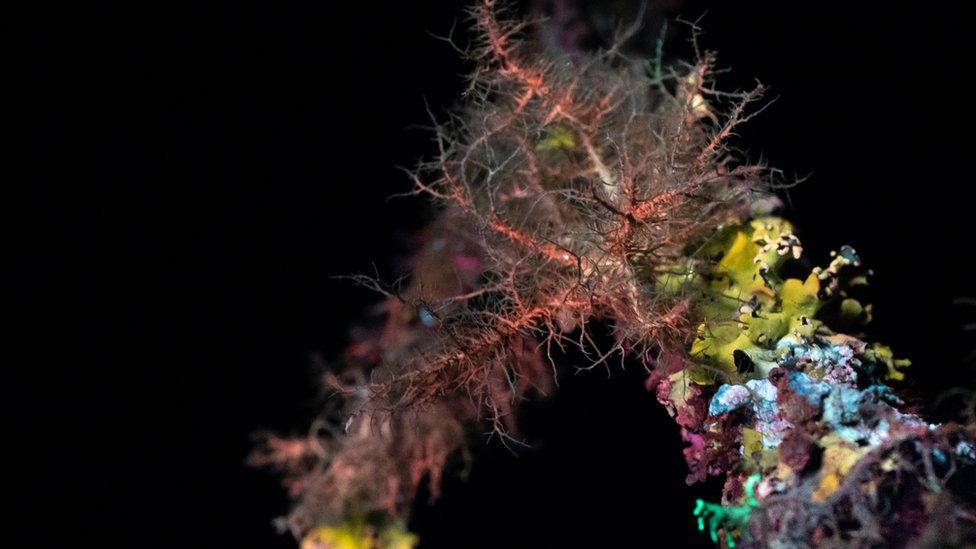
Lichen's colour and structure revealed on a branch in Ty Canol Wood
"It's something new and that's why it's important to think about during dark skies week," she said.
"We know that light pollution affects animals like the navigation of bats or migrating fish being disorientated by lights along a riverbank, but we know so little about UV."
David Atthowe is hoping to change that.
"Because we don't have the joy of being able to see in ultraviolet spectrum," he said, "we're missing this magical world that's going on all around us."
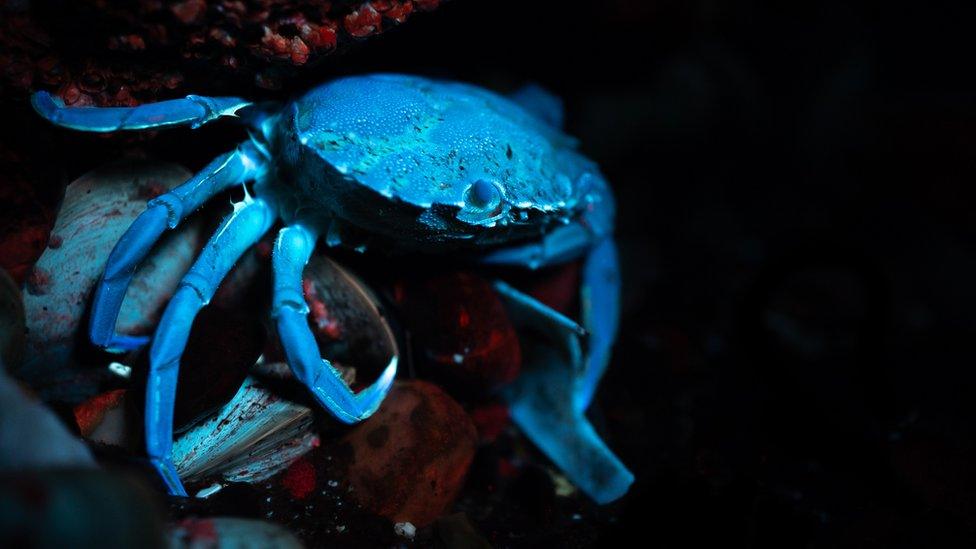
A crab looks blue in a colourful rockpool near Saundersfoot
One of his favourites is the leopard slug.
"It has a defensive mucus which it releases which is bright yellow under the UV," he said.
"Then in 30 seconds it changes colour to bright blue. It's really cool.
"I never thought I would see flowers glow bright blue, green mushrooms lighting up the forest floor, hedgehogs that glow blue, and flowers that look like they have electricity running through them."
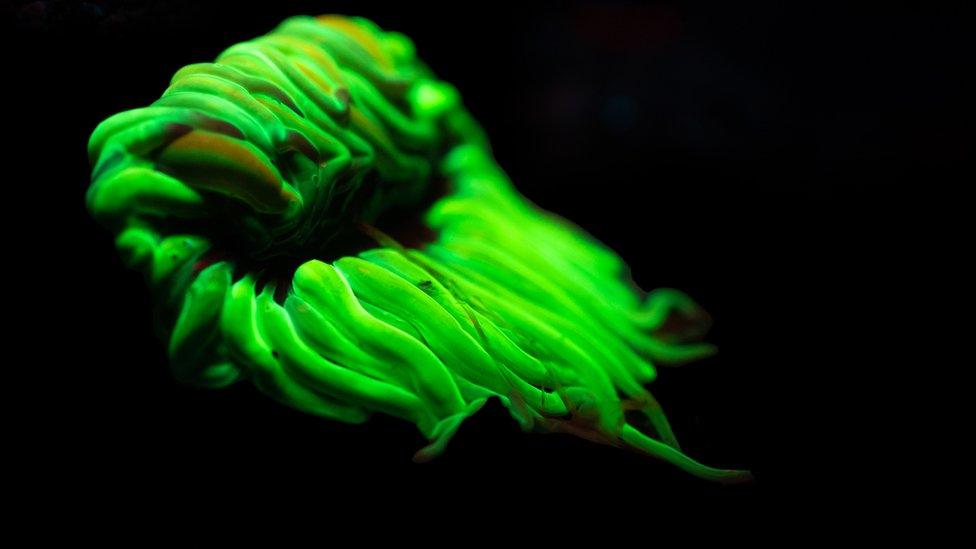
A Snakelocks anemone in a rockpool at Saundersfoot
His advice for anyone interested in finding the UV world for themselves?
"Get yourself a UV torch and start having a look at what you can find in the garden," he said. "Start with flowers and a caterpillar if you can find one and you'll be amazed by what you see."
Related topics
- Published24 January 2024
- Published18 May 2023
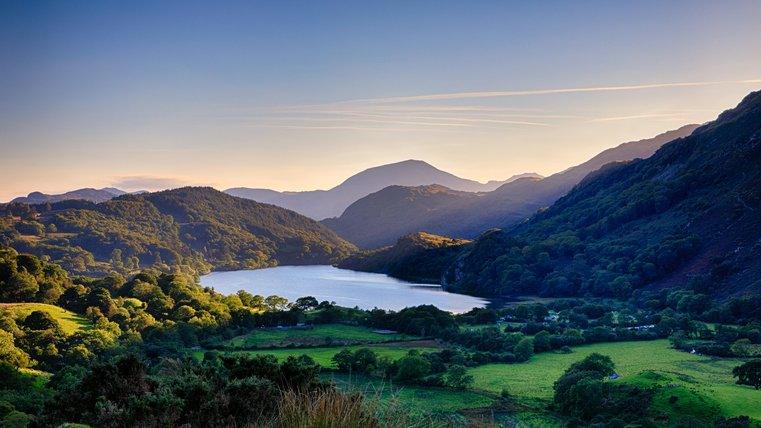
- Published23 February 2023
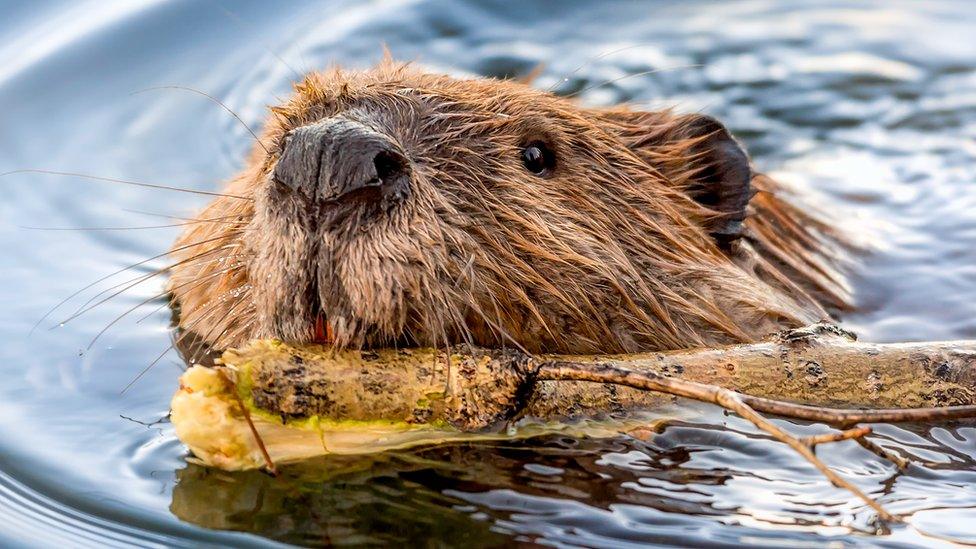
- Published2 May 2023
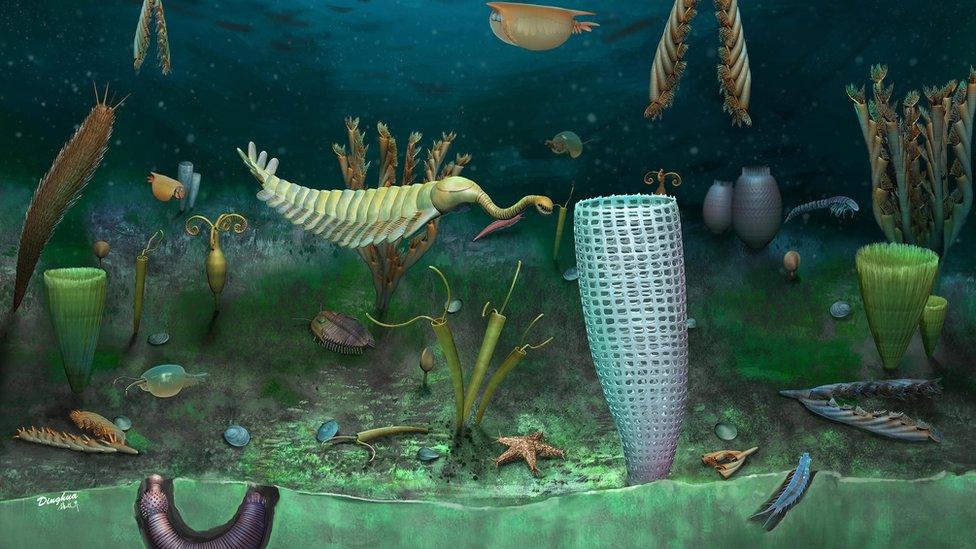
- Published4 November 2020
